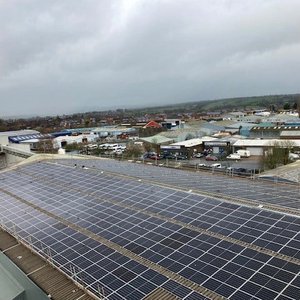In a new video produced by Saving Seafood and released in partnership with IFFO and Omega Protein, aquaculture industry leaders and experts discuss the future of fish meal, fish oil, and farmed seafood. The video premiered at IFFO’s Annual Conference in Berlin.
“People talk about fish meal replacements; there really aren’t fish meal replacements, because no one ingredient is going to have everything that fish meal has,” said Dr Rick Barrows, a Fish Nutritionist at the USDA’s Agricultural Research Service Fish Technology Center in Bozeman, Montana.
Fish meal and fish oil are irreplaceable because they are some of the best sources of the proteins and essential nutrients that are vital to healthy farmed fish. Some of these nutrients, especially omega-3 fatty acids, are an increasingly important part of human diets as well, having been linked to improved heart health and better brain function.
“You and I, like fish, need 40 essential micronutrients,” said Dr Michael Rubino, Director of the National Oceanic and Atmospheric Administration’s Fisheries Office of Aquaculture. “Forage fish, in the form of fish meal and fish oil happens to be the perfect combination of those micronutrients.”
Marine ingredient fisheries, like the menhaden fishery in the U.S., provide a steady supply of fish meal and fish oil to meet the needs of the aquaculture industry. Dr Jeffrey Silverstein, the USDA National Program Leader of Aquaculture notes in the new video that these fisheries have “been very sustainable over the last 30 years,” and that the ingredients they provide will continue to be valuable as aquaculture expands.
“Aquaculture growth has been about 8 percent per year for the last 25 years,” said Dr Silverstein. “Today, about 50 percent of the seafood consumed by humans is coming from aquaculture, and that’s slated to continue growing. So we’re going need to produce more and more seafood through aquaculture.”
With growing global demand for marine ingredients, the aquaculture industry is also looking toward the future, adapting and innovating to make the use of fish meal and oil more efficient. While new formulas and substitute ingredients will become increasingly common, fish meal and fish oil will remain irreplaceable components of aquaculture.
“Aquaculture will, over time, be able to grow, but fish meal will still be at the base of aquaculture, and if you took fish meal away, this would have a very serious effect on the aquaculture industry in the world” said Dr Andrew Jackson, Technical Director of IFFO.
He also notes that marine ingredients are an increasingly important component of the global food supply. According to Dr Jackson, 15 million tons of fish are used annually to produce 5 million tons of fish meal. That 5 million tons goes to feed 35 million tons of aquaculture, and goes into the animal feed that produces around 300 million tons of food. Dr Jackson sees this as a reasonable tradeoff, “so long as things are being done in a proper, responsible, sustainable way.”
The interviews with industry leaders and experts were conducted at the 2015 Seafood Expo North America in Boston and the 2015 SeaWeb Seafood Summit. Featured in the video are Drs Silverstein, Rubino, Barrows, and Jackson, as well as Andrew Nagle, a member of the Seafood Sales and Purchasing team at the John Nagle Company.










